Transitions
Share this Article
Healing practitioners from all methodologies often struggle with supporting clients after a major shift has occurred. There are several models for understanding these transitions. It is imperative from a Healing Den perspective that we remain fully present to the client's experience in support of their empowerment versus our being the expert.
I often share a model that can support their understanding. For example, in the semi-clinical context below we can see a model by Adams and Hopson that can be used with the client to make sense of what is happening (inside) to them as they struggle with changes or insights from the healing process.
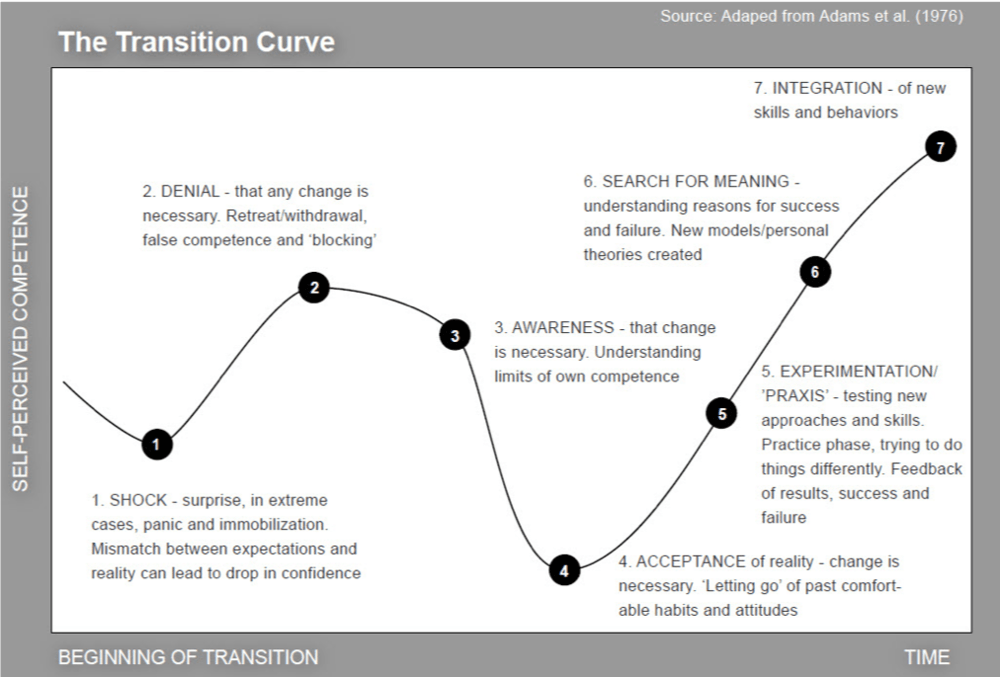
Stages of Transition
The transition curve tracks the self-perceptions of competency during a major shift or change.
Stage 1: SHOCK
The initiation of any major change can throw a person into Shock. The person can appear in total surprise as if they have been disrupted from a trance. In extreme cases, panic and immobilization can occur. Typically, the perceived gap between expectations and reality can lead to drop in confidence.
Stage 2: DENIAL
It is the natural reaction for most people to go into denial. Generally, it consists of a disbelief that the condition or situation is as “bad” as portrayed and/or a denial that any change is necessary. Often, the process involves some form of retreat to memories to create a sense of safety or to complete withdrawal. When retreat occurs, it can manifest a sense of false competence or even ‘blocking’ the new awareness. This suggest that their internal authority comprised of the courage and compassion to be fully present to the movement has not developed sufficiently. Support by being fully present to their process.
This can appear when someone believes that any outside support will be more of a nuisance than a supportive assistance. or, old stories take over suggesting a movement to the past or to the future to get out of the sense of anxiety. Stories of having been through worse or similar situations in the past are offered as evidence that the internal disruption or insights are temporary, and nothing needs to change. "Been there, done that."
Stage 3: AWARENESS
Awareness can occur once the fright/shock of the new reality settles in. This tends to be a soul-searching time where many individuals will begin to understand the limits of their own self-awareness. Some wonder how they could have been so blind to themselves. Identity crisis can develop as self-perceptions surrounding self-confidence, and self-competence are brought into question.
Stage 4: ACCEPTANCE
In stage Four, acceptance of the reality that change is necessary begins to evolve. Typically, 20% will grasp the need for change immediately, 60-70% will grasp the need for change with time and additional information, and 10-20% will never grasp that change is necessary. ‘Letting go’ of past comfortable habits and attitudes becomes a strained and disconcerting process because everything is questioned. The quicker the acceptance and shift to a learning perception, the more likely for a successful transition for the individual.
If the individual organization does not fully embrace the reality of the situation, it will show-up in the next stage when the actual change begins to occur.
Stage 5: EXPERIMENTATION/’PRAXIS’
The actual change to a new internal organization and therefore self-perception begins in this stage. New approaches and skills are initiated. People adopt a learning mode of thinking and begin to practice trying to do things differently. "Living alone". "Living with". Wondering.
Frustration can be triggered as new forms of feedback is generally resulting in both success and failure as the new processes are tried on. The Knowing-Doing Gap tends to surface as the person might know the new way of being (living), but struggle doing it until the new ways of being are habitualized.
Noteworthy is that at this stage, there is a tendency to regress/revert to Stage 2 with a strong, false sense of security that nothing needs to change.[1]“We’ve seen this before and weathered it” is a typical type of statement made. Or, there is a false sense of relief that maybe that insight was not true, triggers unconscious, old habits to quickly regain control of “how we do things”. Without strong, objective awareness, this regression will seal-away the insight while feeling fully justified in their behavior. Note: It is always the client’s decision and it is not a moral decision. It is a capability decision.
Stage 6: SEARCH FOR MEANING
This involve a shift from a sense of danger, discomfort, and disruption to a true understanding of the reasons to accept the insights. New models/ personal theories are created about the self, and the potential for a future. A broader sense of aware of what was wrong and how the new processes are beginning to not only make sense but to make a difference in personal awareness and presence
Stage 7: INTEGRATION
This involves alignment with a new way of being and behaviors that are congruent with the new sense of self. Self-identity evolves into a new form as the transition has awoke a larger sense of self and how one fits into a larger sense of life.
Different Models
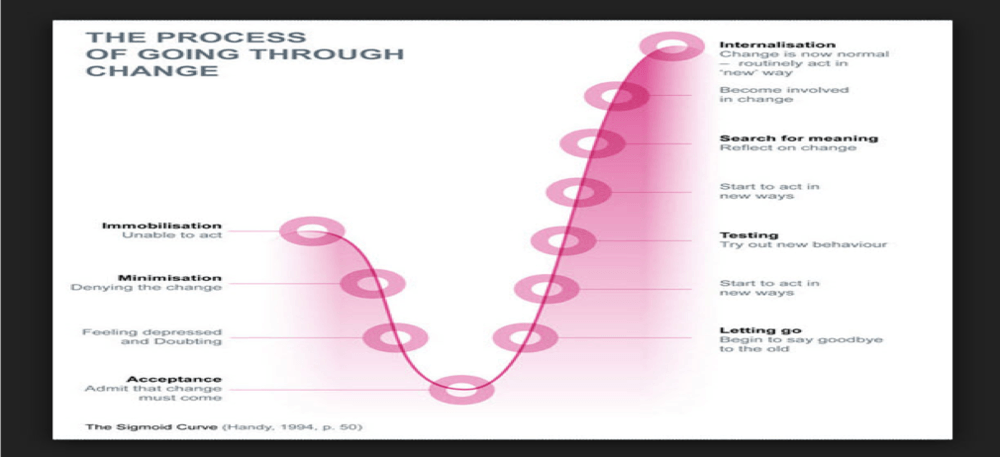
Handy
Another way I use the model Is for the client to track their own process. This allows them to normalize their discomfort and old thinking patterns and realize they are amid a deeply transcendent of not spiritual, process. For example, most people can easily under the Handy change process curve above.
Kubler-Ross
Another way to support the client is to draw a modified Kubler-Ross transitions curve that indicates the grief stages of any loss (self-identity) and provide then suggested the developmental stages to healing or self-acceptance. You can support the client to provide their descriptions of these stages if the words do not fit.
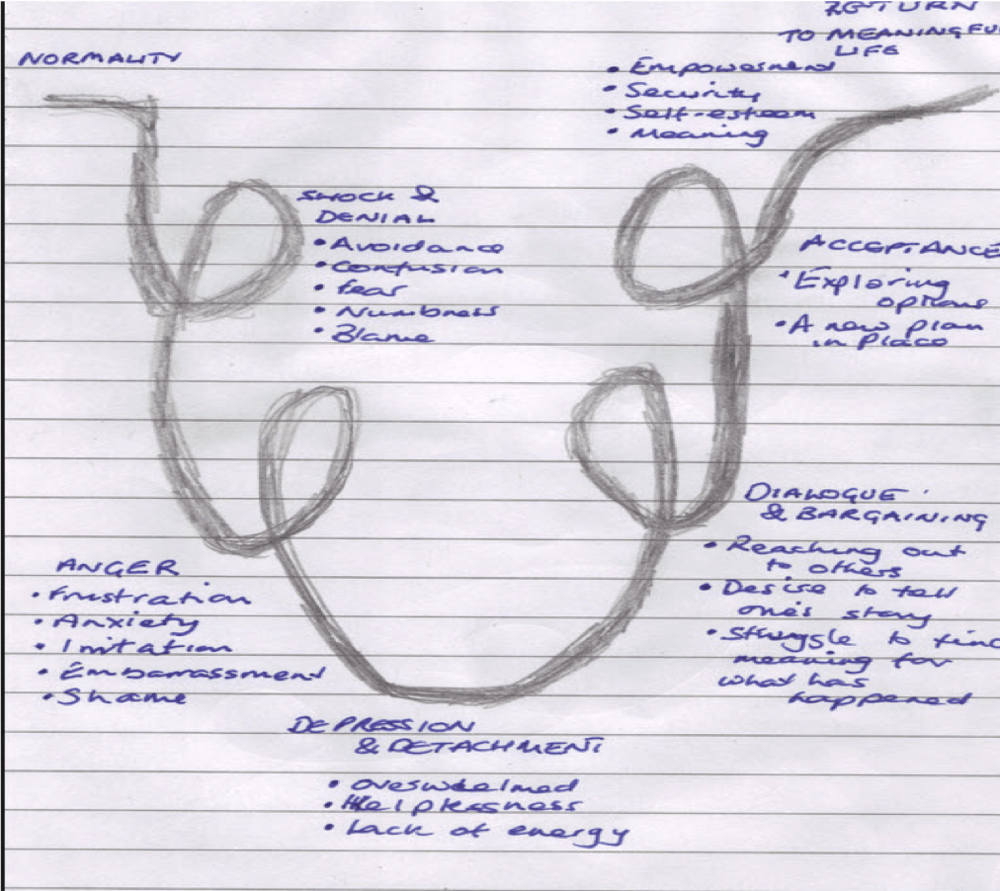
Draw your Own
A final way to support the client and by now I hope you realize how to support yourself through healing transitions and changes is to use the reactive change curve.
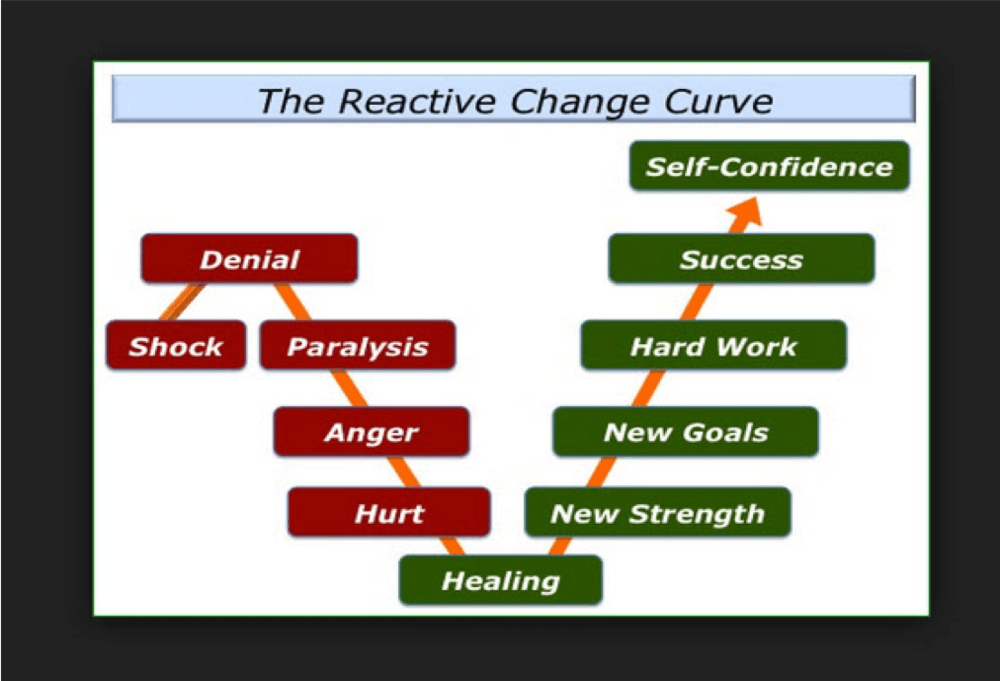
Notice It color codes the most difficult red and the path to healing in green. If you prefer a summary of the various transition models, a table has been provided below. It can be insight to realize how similar they are and in total provide a deeper understanding of the internal processes most people struggle through as they transition from living from the past or future to living in the present.
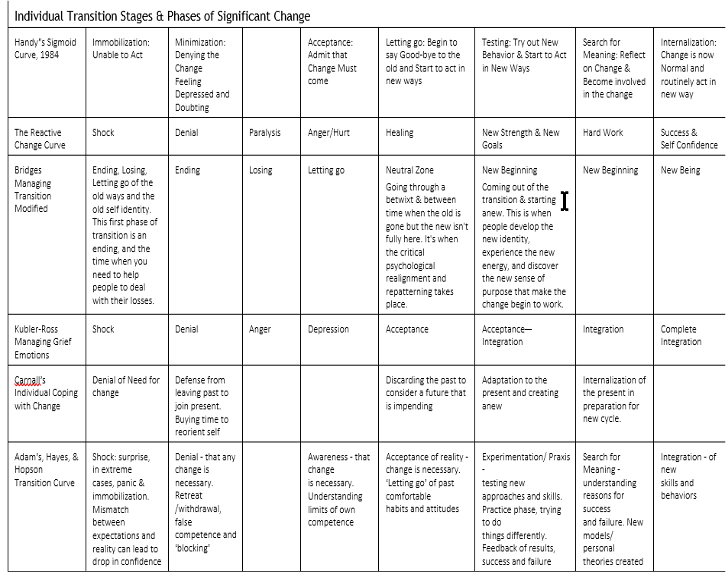
Bountiful Blessings,

Footnote
[1] Typically, after a profound insight, dissolution of a time crystal with the return of a memory, if the full pain and fear bodies are not dissolved, the residual energy will create doubt about truthfulness of the memory or the addition of a moral judgement that leads back Into victimization. If the client does hold residual thoughts and feelings, I ask them to act as if the experiences were real and as the adult they are today, how could one begin to accept it happened and moreover that they survived.









